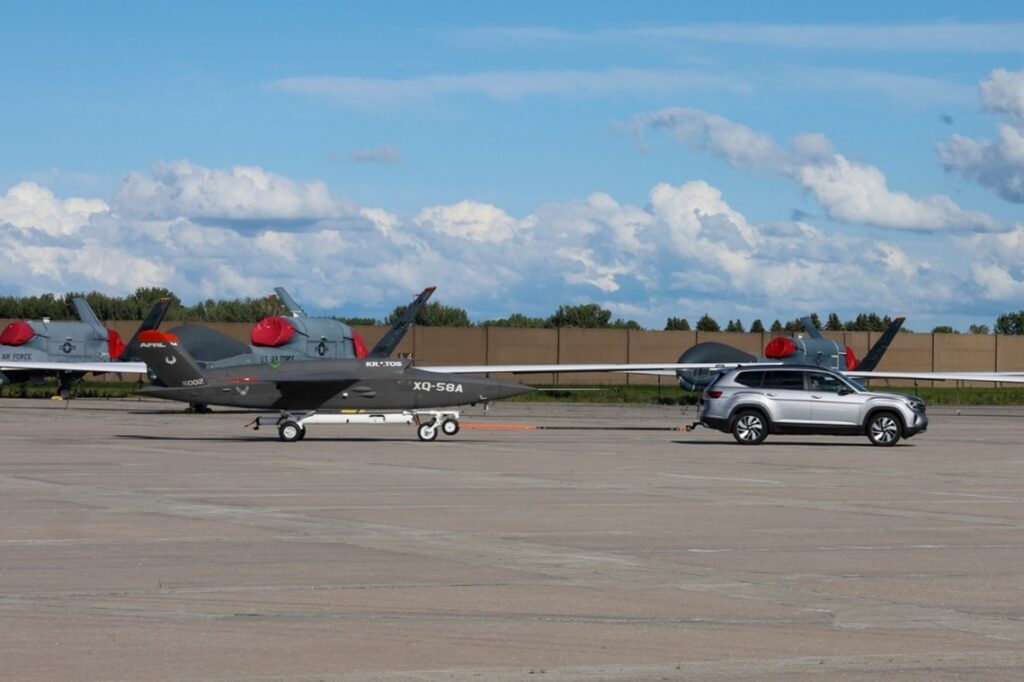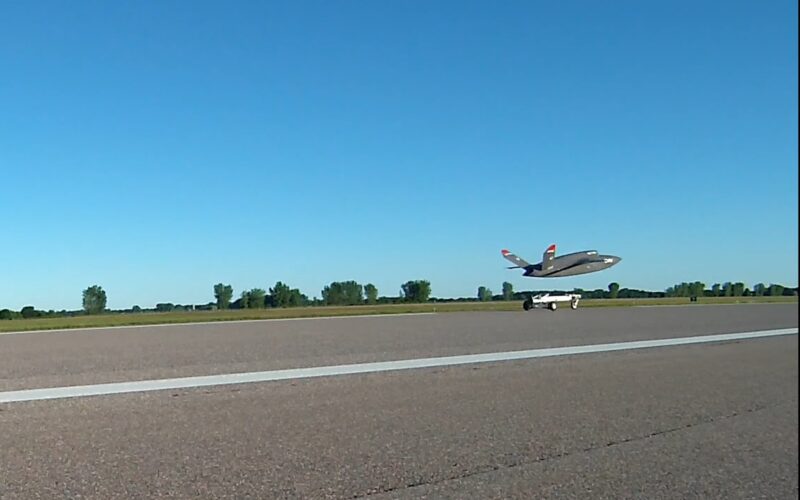Kratos Defense & Security Solutions announced the successful demonstration of the Kratos Trolley Launch System or KTLS for the XQ-58 Valkyrie unmanned combat aerial vehicle (UCAV).
The demonstration occurred at the Grand Sky Range in North Dakota, United States. Grand Sky was created at the Grand Forks Air Force Base in 2021 and supports the development of unmanned aerial vehicles (UAVs) and hypersonic weapons.
The KTLS is an unpowered system, with takeoff thrust provided solely by the aircraft’s jet engine. During the fully autonomous takeoff, the Valkyrie engine throttles up like a conventional jet, accelerating down the runway with the KTLS. At lift-off speed, the Valkyrie separates from the KTLS, which then deploys drogue chutes and brakes to a stop on the runway, allowing the aircraft to continue its mission.
This system allows the Valkyrie to take off from regular runways or straight roads without needing Rocket Assist Take Off (RATO) or other acceleration devices. This new method complements the existing RATO system, which allows the Valkyrie to operate from unprepared locations.
Both RATO and KTLS methods help the aircraft carry more weight and fuel by forgoing the need for regular retractable gear, which also helps reduce maintenance costs. The Valkyrie is designed to operate with a range of 1,500 nautical miles (2,700 kilometers), a top speed of Mach 0.9, and the ability to transport a payload of 272 kilograms.
“As we watch peer adversaries in both their preparations and active conflicts, and at the same time see the DoD budget impacts in our own nation, we have challenged ourselves at Kratos to solve today’s defense challenges with solutions that are realizable, near term achievable, and affordable,” Steve Fendley, President Kratos Unmanned Systems Division, said. “The perfect capability solution too late is really an abject failure.”
The XQ-58 Valkyrie is an early model of Collaborative Combat Aircraft (CCA) developed by the USAF. It is designed to work alongside manned fighters such as the F-22 Raptor and F-35 Lightning II. The goal is to extend the range of other aircraft by working together as a human-machine team while keeping pilots out of harm’s way.


